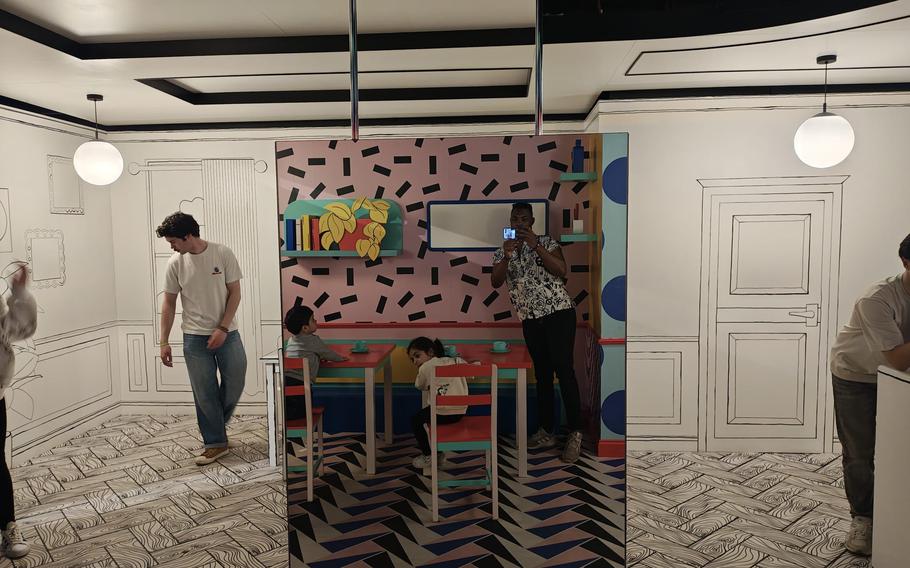
A pop art room at the Twist Museum in London is split in half, one part vibrant color and the other monochrome, with a large double-sided mirror in the center. About an hour and a half is ample time to explore its illusions and assorted other exhibits at a leisurely pace. (Loretto Morris/Stars and Stripes)
Growing up, I loved movies like “The Matrix” that piqued my young brain to question our conceptions of reality. So when someone told me about an illusion museum in London, I was surprised by my unawareness of its existence.
Underneath Oxford Street in one of London’s most popular districts, the Twisted Museum contains a vast array of exhibits that entice those eager to see just how many ways the brain can be tricked.
That’s an apt way of describing me and the group of friends who checked the place out recently, although the admission price did make us balk a bit.
We began the journey in a space that alters the visitor’s perception of color by making it seem that everything, including other visitors, is completely monochrome. Successive exhibits showed us how light waves can reveal and conceal images or create patterns.
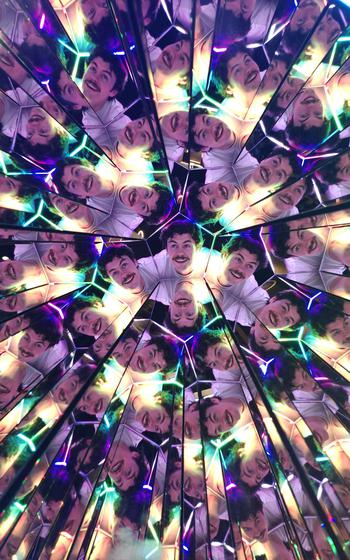
At the Twist Museum in London, a section dedicated to mirrors creates varying distorted images of the human body. (Loretto Morris/Stars and Stripes)
We all agreed that the mirror section was the highlight. It featured a wide room of multiple crystalline structures and viewing windows lined in LEDs that created dozens of distorted reflections.
The mirrors were carefully arranged to make intricate patterns and the LEDs outlined them so we could see how much detail they contain.
We had already spent about half an hour in the museum by then, part of which time I had been explaining a display with flashing lights that used shutter speed to make an object move in alluring ways.
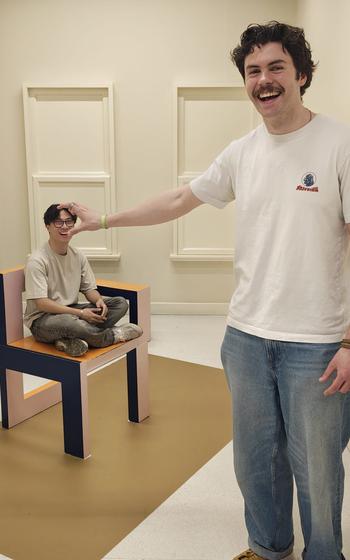
This room at the Twist Museum in London is designed to create the illusion of distance. Known as the Beuchet chair illusion, it was created by psychologist Jean Beuchet in the 1960s. (Loretto Morris/Stars and Stripes)
The next high point were rooms that altered perceptions. One was a tilted, while another featured a setup that makes people standing at each corner appear to be vastly different sizes.
Still another room involved taking a photo with a cellphone at a certain angle, producing a distortion that portrays the subject sitting in a seat that makes them seem much shorter.
We also toured a room that fosters awareness of the tonal difference in the pouring of hot water and cold water. This exhibit falls under more of a “fun fact” heading because it doesn’t create illusions like the previous ones we explored.
In addition, we encountered a room with a gizmo resembling a photo booth, which scans the likeness of visitors and converts it into a custom hologram.
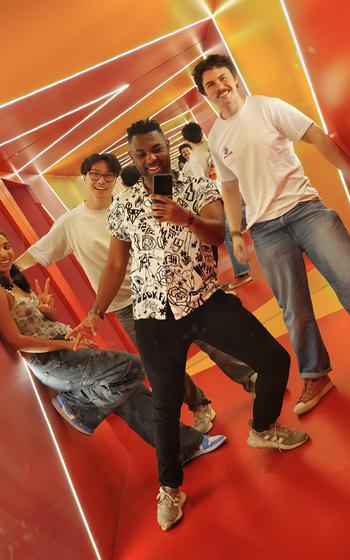
One of the prime attractions at the Twist Museum in London is the twisted room that traversal nearly impossible. The vestibular system, located in the inner ear, detects head motion and helps with spatial orientation and balance. (Loretto Morris/Stars and Stripes)
Part of the Twist Museum’s draw is how Instagrammable it is, and in that vein I took a liking to a pop art-style room split in half, with one side painted vibrantly and the other devoid of color. It’s one of the venue’s larger photo sets.
When I polled my friends afterward, they said they enjoyed the museum and thought it worth the price of admission. But they also mused about the odds of finding a similar experience for less money in a place farther from the city center.
All told, we spent about an hour and a half reveling in the Twist Museum’s fun, which proved to be anything but illusory.
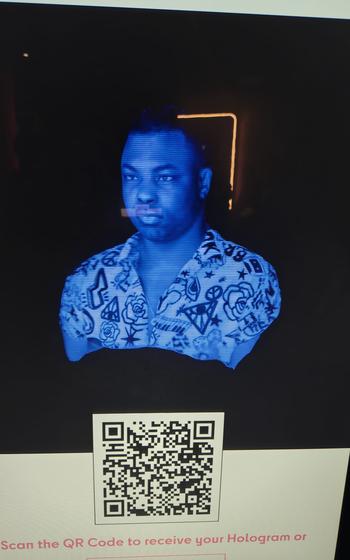
A tool for scanning a person's likeness at the Twist Museum in London. Billing itself as an illusion museum, Twist fuses art, technology and sensory play through a range of exhibits. (Loretto Morris/Stars and Stripes)
Twist Museum
Address: 248 Oxford St., London
Hours: Monday and Tuesday, 11 a.m.-7:30 p.m.; Wednesday and Thursday, 10 a.m.-7:30 p.m.; Friday: 11 a.m.-9 p.m.; Saturday, 10 a.m.-9 p.m.; Sunday. 10 a.m.-7:30 p.m.
Prices: Adults, 24.50 pounds; rate for children, families (two adults and two children or one adult and three children) and seniors, 20 pounds; group rate of 20 pounds apiece with minimum purchase of 10 tickets; toddlers, free.
Information: Online: twistmuseum.com